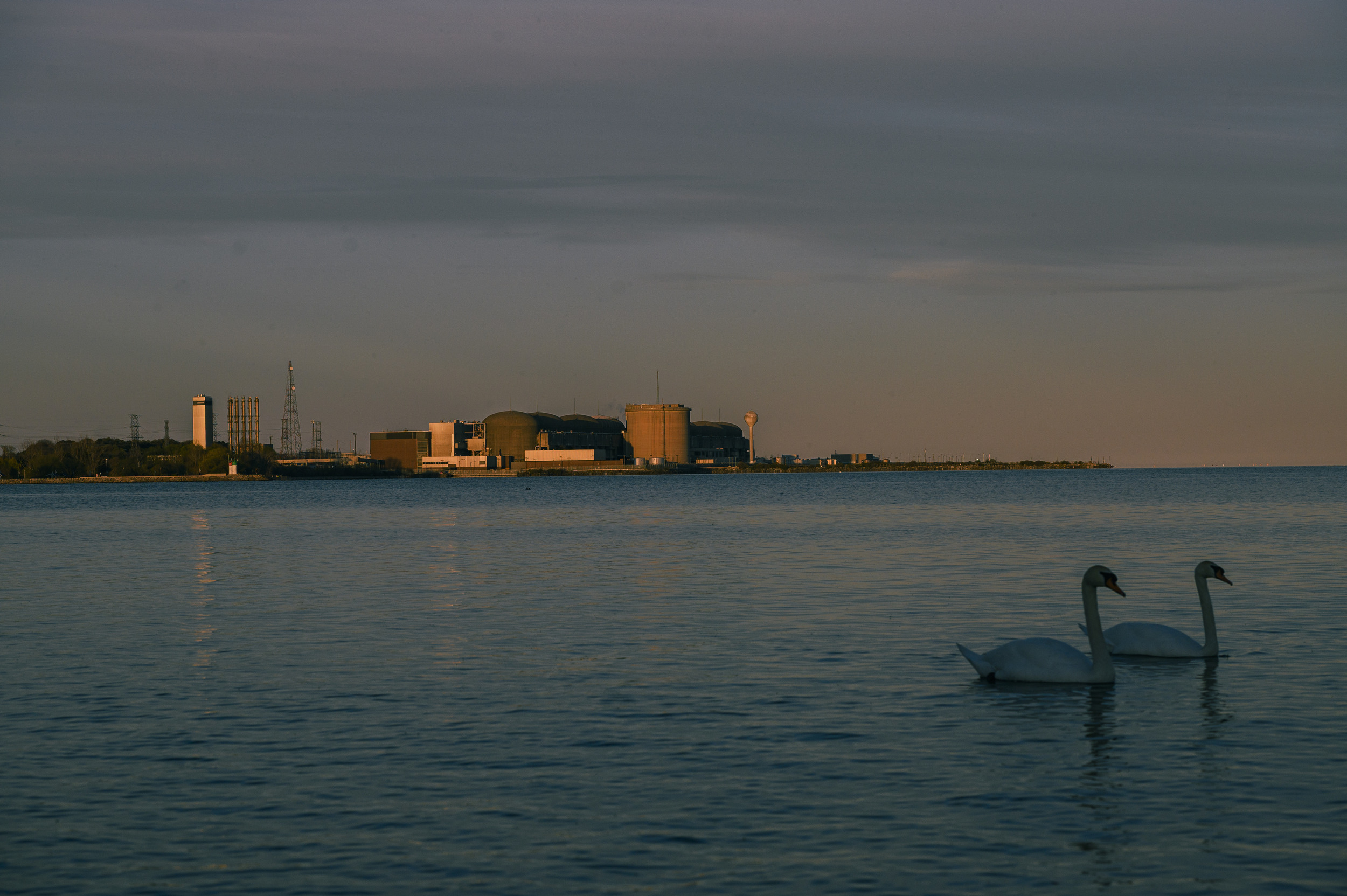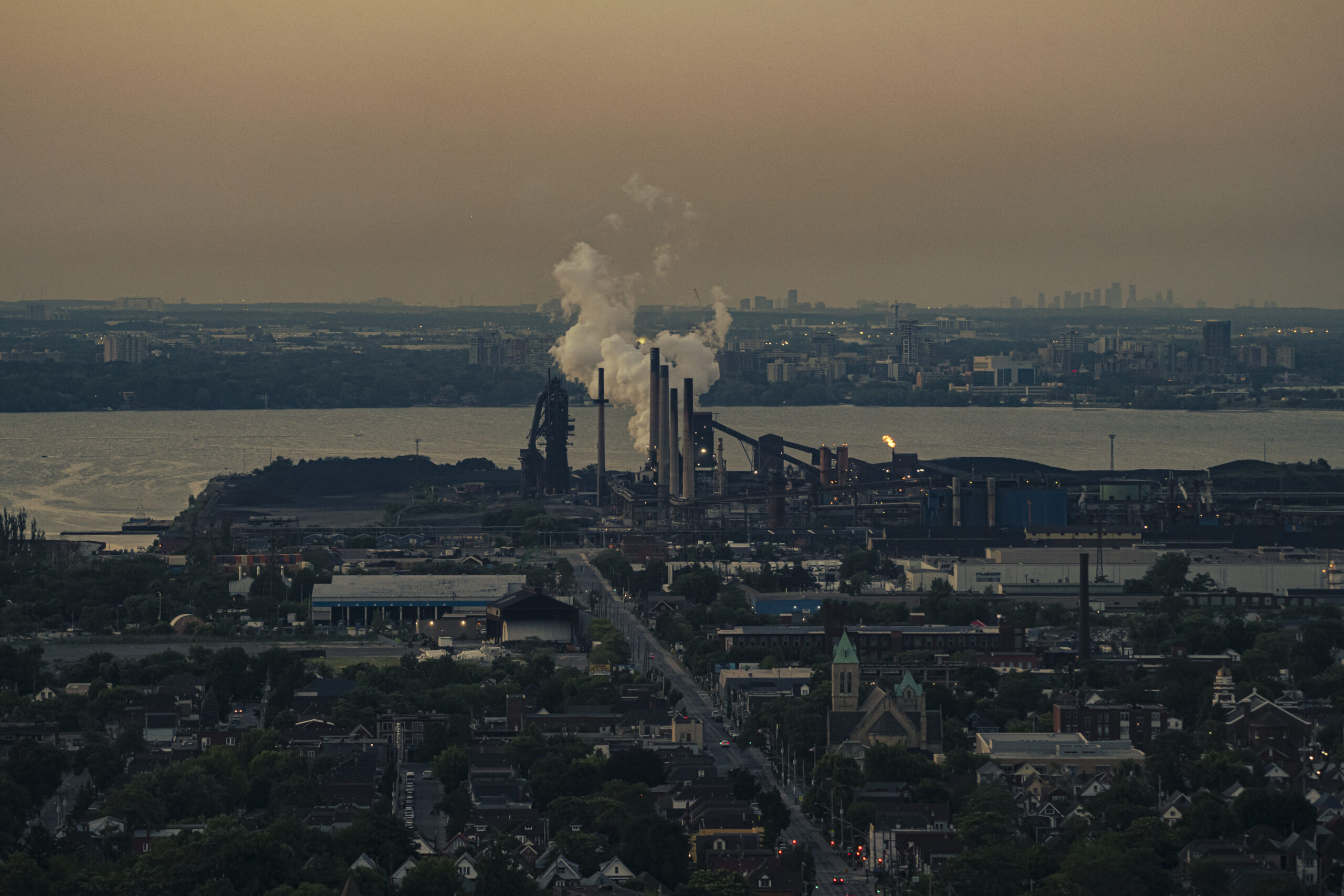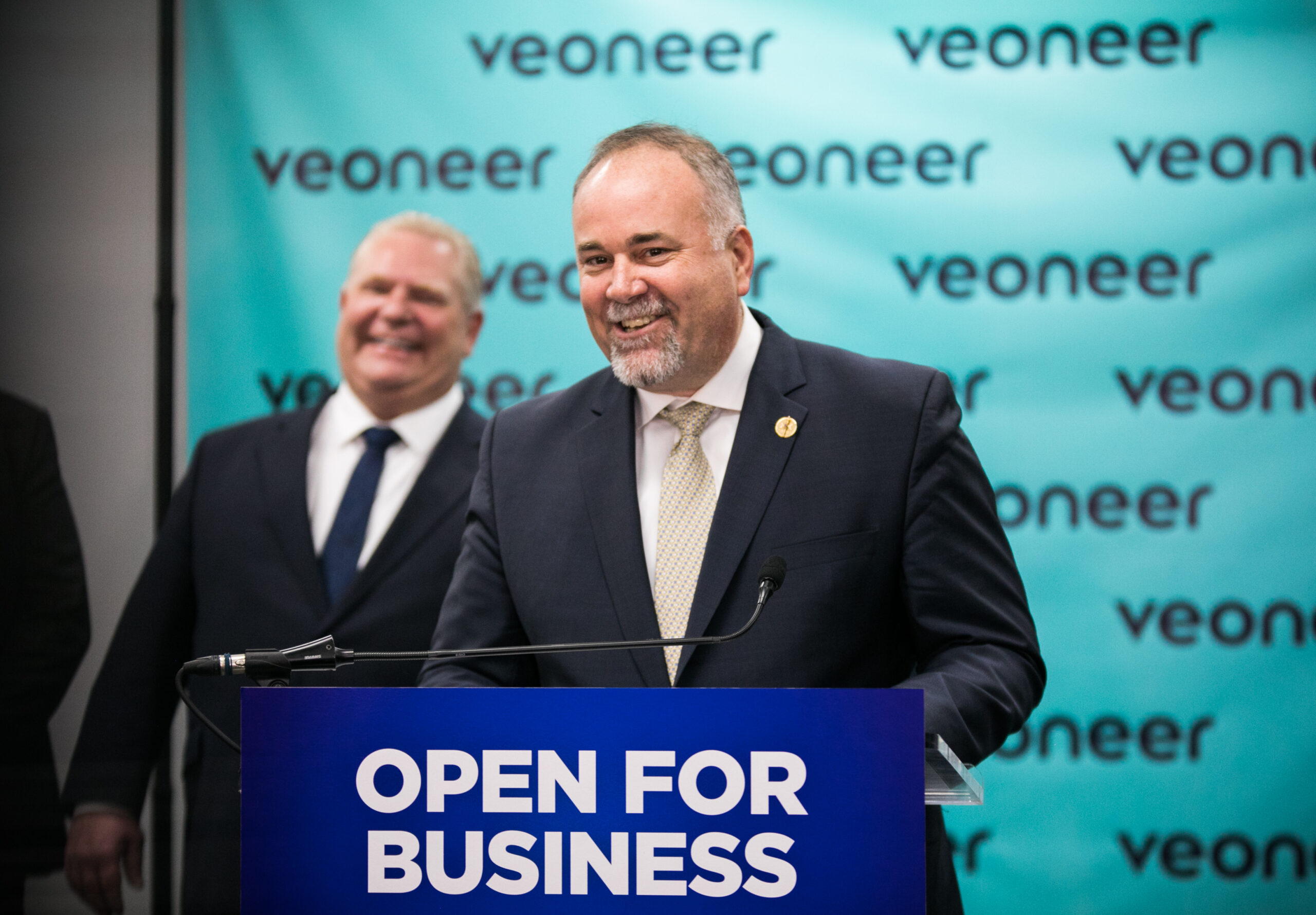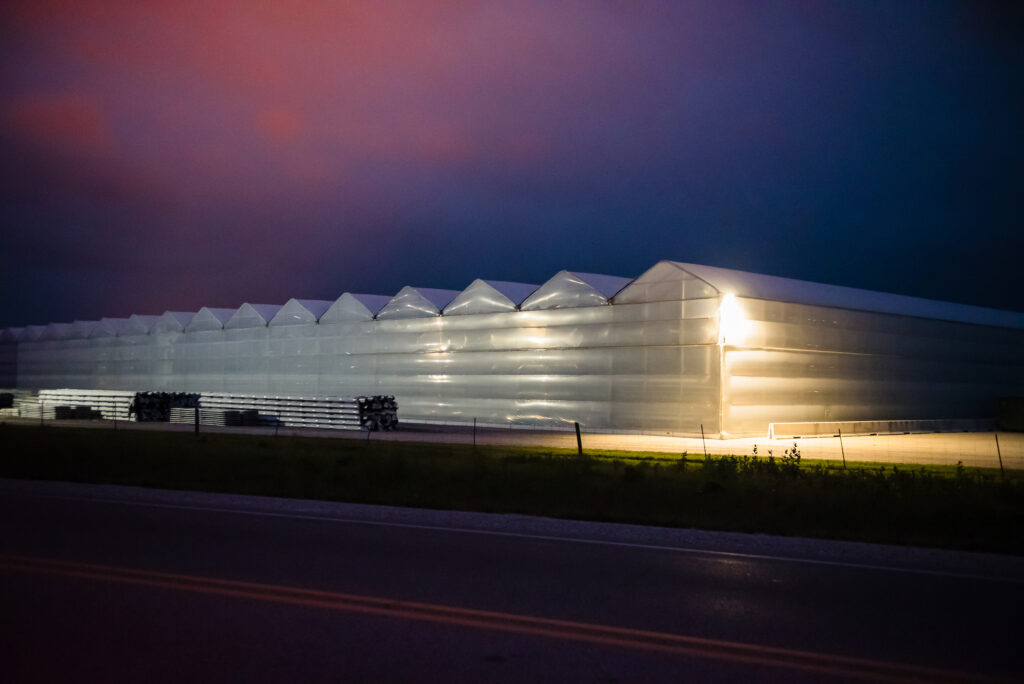
‘Afraid of the water’? Life in a city that dumps billions of litres of raw sewage into lakes and rivers
10 billion litres of sewage are dumped into Winnipeg’s lakes and rivers each year. Some...
Since taking office in 2018, the Doug Ford government has completely reversed course on energy policy.
Early in its tenure, the Progressive Conservatives cancelled more than 750 renewable energy contracts, including one for a large partially built wind farm and many with Indigenous communities. Fast forward to summer 2023, and it embarked on the biggest expansion of green energy Ontario has seen in nearly a decade — at least in theory — ending a five-year freeze on new renewable energy projects.
Late last month — on Aug. 28 — newly appointed Minister of Energy and Electrification Stephen Lecce shifted direction once again, pledging to expand energy supply with an “all-of-the-above” approach that will open the door further to wind, solar and likely natural gas.
Ontario doesn’t have enough power supply to meet rapidly growing demand. On Oct. 16, the Independent Electricity System Operator said electricity demand is set to rise 75 per cent by 2050 — far higher than the 60 per cent increase the operator projected last year.
To address this, for the last few years Ontario has been trying to quickly build new or expand old sources of energy. Nuclear facilities are being refurbished, gas plants are being expanded, batteries are being installed seemingly everywhere to provide energy storage and wind farms are back on the table.
Energy policy impacts every person in Ontario. It dictates our ability to stay cool in hotter summers, warm in a cold snap — and keeps our lights on through both. As climate change worsens, there is an urgent need to shift away from fossil fuels. And there’s the added challenge of doing it in a way that doesn’t increase our energy bills.
Here’s what you need to know about the Ford government’s efforts to grow Ontario’s energy supply — and what it could mean for the future of the province.

There are two main reasons.
First, there is increasing demand from a growing population for electric transportation and home heating (or heat pumps). Second, major demand increases are also coming from the agriculture sector, driven by an expanding greenhouse industry, as well as steel and auto industries that are moving to decarbonize their emissions-heavy operations.
In October, the Independent Electricity Systems Operator, which runs Ontario’s grid, said industrial electricity demand has jumped even more than last year’s forecast to 58 per cent by 2035, equivalent to adding a city the size of Toronto to the grid.
In its latest forecast, the operator said Ontario will also add 16 large data centres — the physical buildings that store digital information — by 2035 to facilitate the increased use of artificial intelligence. Such centres require a lot of energy and will account for 13 per cent of Ontario’s new electricity demand.
You can read more about Ontario’s energy supply crunch here.
Mostly because our nuclear fleet, which has long provided more than half of Ontario’s electricity needs, is shutting down for refurbishment by 2026. That plus the increase in demand means the province is hungry for new power sources.
In October, the Independent Electricity System Operator said the province has enough power for the rest of this year. It will release a full plan early next year on how to meet this rising demand.
Mostly, yes!
As per 2023 data from the operator, Ontario’s electricity grid is 87 per cent emissions free, meaning only 10 per cent of our electricity supply comes from fossil fuels, which emit greenhouse gases, contributing to global warming.
But this number has dropped from 94 per cent emissions free in 2022 as Ontario has increased natural gas in the short term. Natural gas, despite its name, is primarily made up of methane, an extremely harmful greenhouse gas.
In 2022, the province awarded three new contracts to natural gas plants — a move expected to increase emissions from the grid by 375 per cent by 2030 and by more than 600 per cent by 2040.

There are three main entities.
The Government of Ontario sets energy policy and direction. That means the minister of energy and electrification dictates what type of energy source (gas, nuclear, wind, etc.) is part of Ontario’s supply.
That direction is implemented by the Independent Electricity System Operator, which is in charge of balancing the supply and demand of the entire system. It is empowered to offer advice and award contracts to energy companies that can effectively address this crunch.
The government’s policy is also weighed by the Ontario Energy Board, an independent regulator that can approve or deny plans put forward by energy companies based on the province’s goals.
As of this month, municipalities now have a greater role in determining what energy projects are built and where. More on that below.
In December 2022, the Independent Electricity System Operator released its Pathways to Decarbonization report, which urged Ontario to more than double its electricity-generating capacity by 2050 or face brownouts — partial and temporary losses in power — or pockets of power outages.
In July 2023, the government responded to this call with its first comprehensive energy plan since taking office. The 84-page document, titled Powering Ontario’s Growth: Ontario’s Plan for a Clean Energy Future, pledged to build new nuclear, invest in hydrogen and battery storage, procure new non-emitting resources and expand Ontario’s transmission lines. (On the latter, Ontario has made it easier to expropriate lands for such lines through the Get It Done Act, which you can read about here.)
A lot of that work is now underway: Ontario has already secured Canada’s largest investment in battery storage technology, which allows the province to store energy for moments of peak demand.
All of this was put in place by former energy minister Todd Smith and is being spearheaded by the system operator. Last winter, the operator announced plans to procure enough renewable energy over the next decade equivalent to the amount needed to power the cities of Toronto and Ottawa combined.
Lecce — who took over the energy portfolio in June from Smith with the promise of turning Ontario into a “clean-energy superpower” — sang a slightly different tune. In August, Lecce said this procurement process would now be “technology agnostic” and seemingly opened the door to new natural gas generators. And Lecce has asked that new energy be procured “with urgency” as the province will need at least 60 per cent more energy than it currently produces by 2050.
“We need everything under the sun to keep up with demand,” Marko Cirovic, senior manager of resource development and procurement with the Independent Electricity System Operator, told The Narwhal in an interview.
Thus far, Ontario has procured enough energy support to last through the 2020s, he said. Now the focus is on the 2030s and beyond. The operator is working to figure out how quickly they can act on the government’s direction to secure lots more energy supply quickly.
“As far as Ontario goes, we’ve never seen this before,” Cirovic said, regarding the massive scale of the procurement. “It is a really good step forward.”


Big energy projects in Ontario are for the most part built in municipalities that deem themselves to be a “willing host” to the company and its proposal. That means local governments, with the support of their constituents, pass a motion or resolution of support for the project. (Though that doesn’t necessarily mean there’s widespread support within the community, as noted in towns like Meaford, Ont., whose city council supports TC Energy’s bid to build a large pumped storage project along the shores of Georgian Bay despite resident pushback.)
Community support has never been a mandatory requirement for energy projects to be approved. Famously, in the early 2000s, the Dalton McGuinty-led Liberal government imposed gas plants on two municipalities (Mississauga and Oakville) staunchly opposed to having them built within their borders.
Former energy minister Smith — who sat on the government committee that assessed the gas plant scandal and highlighted the importance of community involvement in energy discussions — made municipal support a requirement of getting the green light during his term. In his August announcement, Lecce reiterated this requirement. “Long gone are the days where Queen’s Park imposes projects on unwilling communities,” he said.
Cirovic told The Narwhal since municipal support became mandatory, the Independent Electricity System Operator has increased its engagement with local governments and First Nations to help them understand their greater role in the process.
“If they are going to put their hand up and be a willing host, they need to know there are benefits,” he said. These include tax breaks and also community benefits from the company’s investments in the town.
But Cirovic is clear that municipalities determine their position independently.
The Independent Electricity System Operator guides energy companies to areas of the province where energy supply is needed. “It is up to developers and the municipalities to determine the exact site,” he said. “We have been pleasantly surprised at how many communities have come forward with backing.”

On June 6 — the same day he was shuffled out of the energy file — Smith and former agricultural minister Lisa Thompson wrote to the electricity operator instructing them to prohibit energy projects on specialty crop areas, where fruits and vegetables like peaches, cherries, carrots and onions are grown. Smith and Thompson also asked the operator to ban ground-mounted solar panels from being built in prime agricultural areas — the province’s most fertile growing land.
Sound familiar? Alberta made a similar announcement a few months earlier.
Lecce reiterated these requirements and promised the province would “never misuse” farmland — at least for energy. The government is currently instructing municipalities like Wilmot Township to expropriate land, including farms, for industrial mega-development. Since 2022, the government has changed growth and development policies to permit development on farmland, only to reverse these changes after great pushback. According to Ontario Farmland Trust, the province is losing 319 acres of farmland every day to other uses. At that rate, Ontario will lose all of its farmland in 100 years.
But farmers also need a lot more energy, as farming towns like Leamington are looking to power a greater number of greenhouses. “They need access to affordable energy and so we made a commitment to work with them on a policy that ultimately will respect prime agricultural land,” Lecce said.
To ensure this, the Ford government is also asking that any energy projects proposed on vital agricultural land be subjected to an agricultural impact assessment by the municipality to ensure “the land they’re picking is the most suitable type of land for the project,” Cirovic said.
“This is quite new for energy projects,” he added. “It’s a new wrinkle.”

For the past five months, the Independent Electricity System Operator has been working “quite closely” with farming organizations and energy developers to flesh out what this assessment will look like, Cirovic said. “Collectively, we’re trying to advance things as quickly as possible while making sure we have a suitable framework in place to address these new stressors,” he said.
The idea of agricultural impact assessments was first proposed in 2018 by the former Liberal government to identify which areas of farmland to prohibit development on. At the time, it was suggested as a tool to be used at the discretion of municipalities, but also that it could be expanded in the future to apply to development more broadly.
The Ford government has now made it a requirement for energy projects specifically, along with municipal consent. There are concerns this will be an added responsibility for already cash-strapped municipalities with limited resources to undertake such an assessment.
“Devil is in the details,” Jason Dion, senior researcher with the Canadian Climate Institute, told The Narwhal. “We’ll have to see how that looks in practice.”
Jennifer Pfenning, a farmer in the region of Waterloo and president of the National Farmers Union, is cautiously optimistic. The new rules “should not deter green energy projects, but should push us to adopt effective integration of solar and wind into the rural landscape and agricultural community in ways that enhance and complement farming rather than disrupting and impeding it,” she told The Narwhal. “It is realistically possible to have our windmills and [solar panels] without sacrificing our carrots and corn.”
We’ll have to wait and see.
The latest round of procurement is set to conclude in 2026, so it will be two years before we see whether any new renewable projects are greenlit in Ontario in the face of these new rules.
Energy projects can also take a long time to build, so it’s hard to say when we’ll actually see new clean energy in our grid.
We don’t know.
Six years into its mandate, the Doug Ford government still has no clear policy on the future of natural gas, despite urges from the government’s own expert panel on the energy transition to create one. The absence of it has led to tensions between the government and the Ontario Energy Board over who should pay for new homes to be connected to natural gas, at a time when the energy transition is forcing a shift away from fossil fuels.
Last December, Smith told a room full of energy and business leaders that “there is currently no like-for-like replacement for natural gas.” That, he said, is why it’s needed to manage the supply crunch.
And in June, days after taking over the energy file, Lecce said he “will not pursue an ideological path that will deny some forms of energy when we need all of them to help fuel our economy.”
It’s unclear how much gas will be allowed in the new procurement, but Dion said the government could give clear direction on that. The absence of it is “creating problems and risks and future liabilities for ratepayers and taxpayers,” he said. “It needs to be further clarified and elaborated if we’re to have a fulsome electricity strategy, which, until now, has been sort of ad hoc and incomplete.”
Updated on Oct. 16, 2024, at 12:25 p.m. EST: This story has been updated to include the Independent Electricity System Operator’s most recent electricity demand forecast for Ontario.
Get the inside scoop on The Narwhal’s environment and climate reporting by signing up for our free newsletter. On a warm September evening nearly 15...
Continue reading
10 billion litres of sewage are dumped into Winnipeg’s lakes and rivers each year. Some...

Court sides with Xatśūll First Nation, temporarily halting Mount Polley mine waste expansion

Break out the champagne: Emma’s storied life and leadership in journalism has earned her the...
